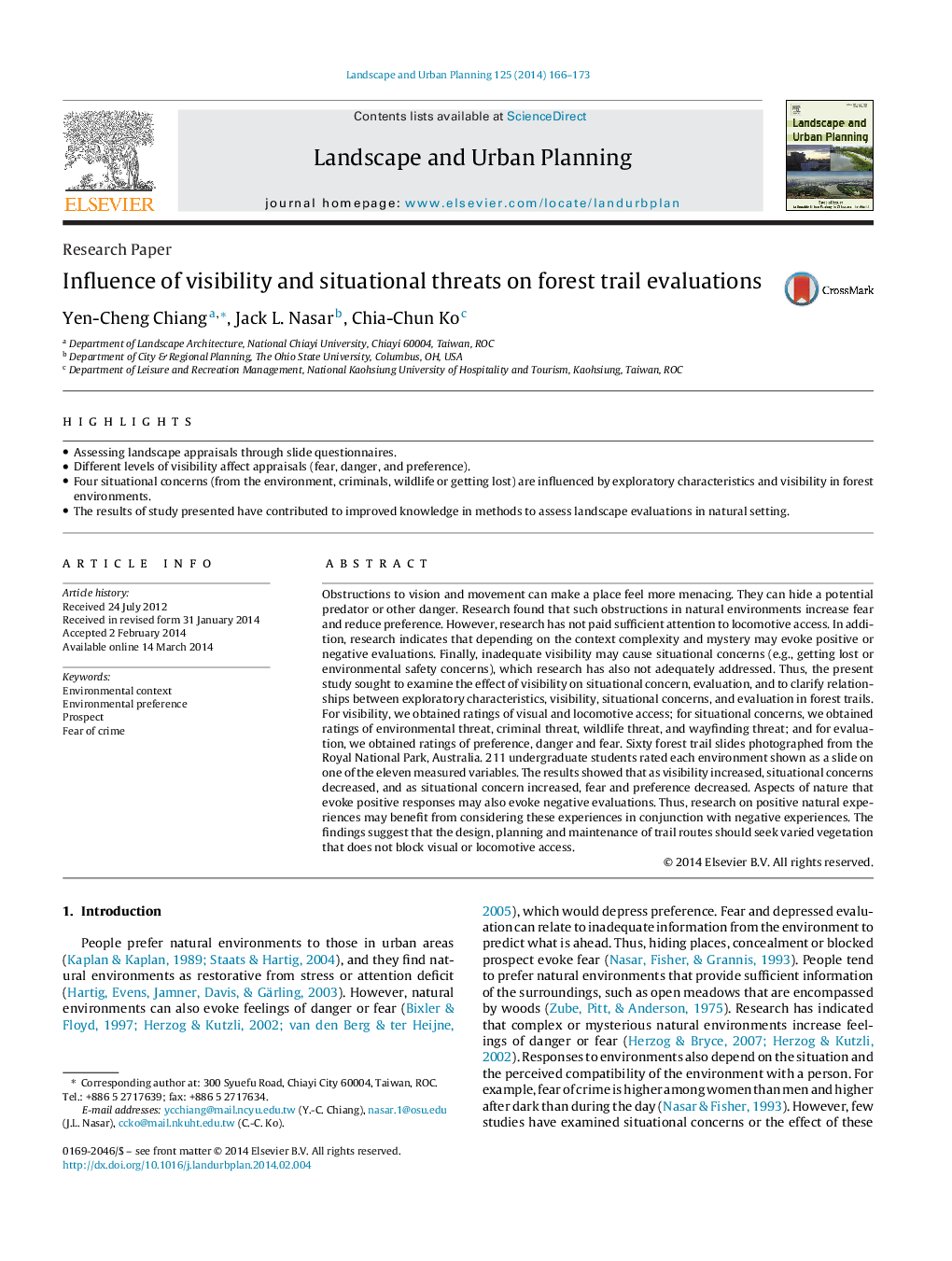| Article ID | Journal | Published Year | Pages | File Type |
|---|---|---|---|---|
| 7461556 | Landscape and Urban Planning | 2014 | 8 Pages |
Abstract
Obstructions to vision and movement can make a place feel more menacing. They can hide a potential predator or other danger. Research found that such obstructions in natural environments increase fear and reduce preference. However, research has not paid sufficient attention to locomotive access. In addition, research indicates that depending on the context complexity and mystery may evoke positive or negative evaluations. Finally, inadequate visibility may cause situational concerns (e.g., getting lost or environmental safety concerns), which research has also not adequately addressed. Thus, the present study sought to examine the effect of visibility on situational concern, evaluation, and to clarify relationships between exploratory characteristics, visibility, situational concerns, and evaluation in forest trails. For visibility, we obtained ratings of visual and locomotive access; for situational concerns, we obtained ratings of environmental threat, criminal threat, wildlife threat, and wayfinding threat; and for evaluation, we obtained ratings of preference, danger and fear. Sixty forest trail slides photographed from the Royal National Park, Australia. 211 undergraduate students rated each environment shown as a slide on one of the eleven measured variables. The results showed that as visibility increased, situational concerns decreased, and as situational concern increased, fear and preference decreased. Aspects of nature that evoke positive responses may also evoke negative evaluations. Thus, research on positive natural experiences may benefit from considering these experiences in conjunction with negative experiences. The findings suggest that the design, planning and maintenance of trail routes should seek varied vegetation that does not block visual or locomotive access.
Related Topics
Life Sciences
Agricultural and Biological Sciences
Ecology, Evolution, Behavior and Systematics
Authors
Yen-Cheng Chiang, Jack L. Nasar, Chia-Chun Ko,
